Kenya: Maasai Mara Migration Special Tour Report 2020
29 August 2020


















































































Cheetah (male) (image by Mark Beaman)

Blue Wildebeest jumping into the Mara River (image by Mark Beaman)
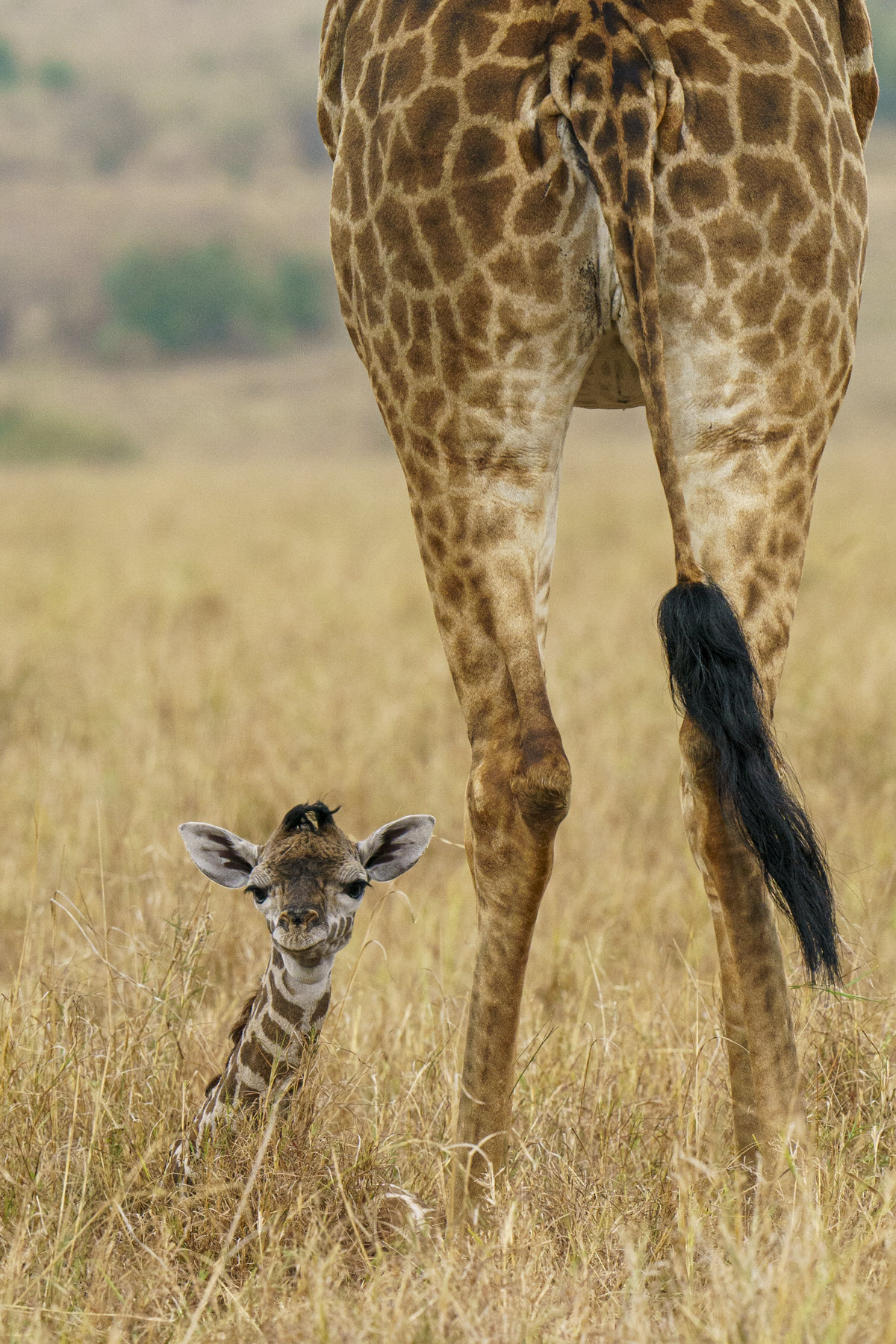
Just two days old and I have lost Mummy already! (image by Mark Beaman)

Black-winged Lapwing, a typical denizen of the Mara plains (image by Mark Beaman)

Lilac-breasted Roller (image by Mark Beaman)

Handsome Olepolos with his belle (image by Mark Beaman)

A Secretarybird, an aberrant raptor, in search of snakes and lizards (image by Mark Beaman)
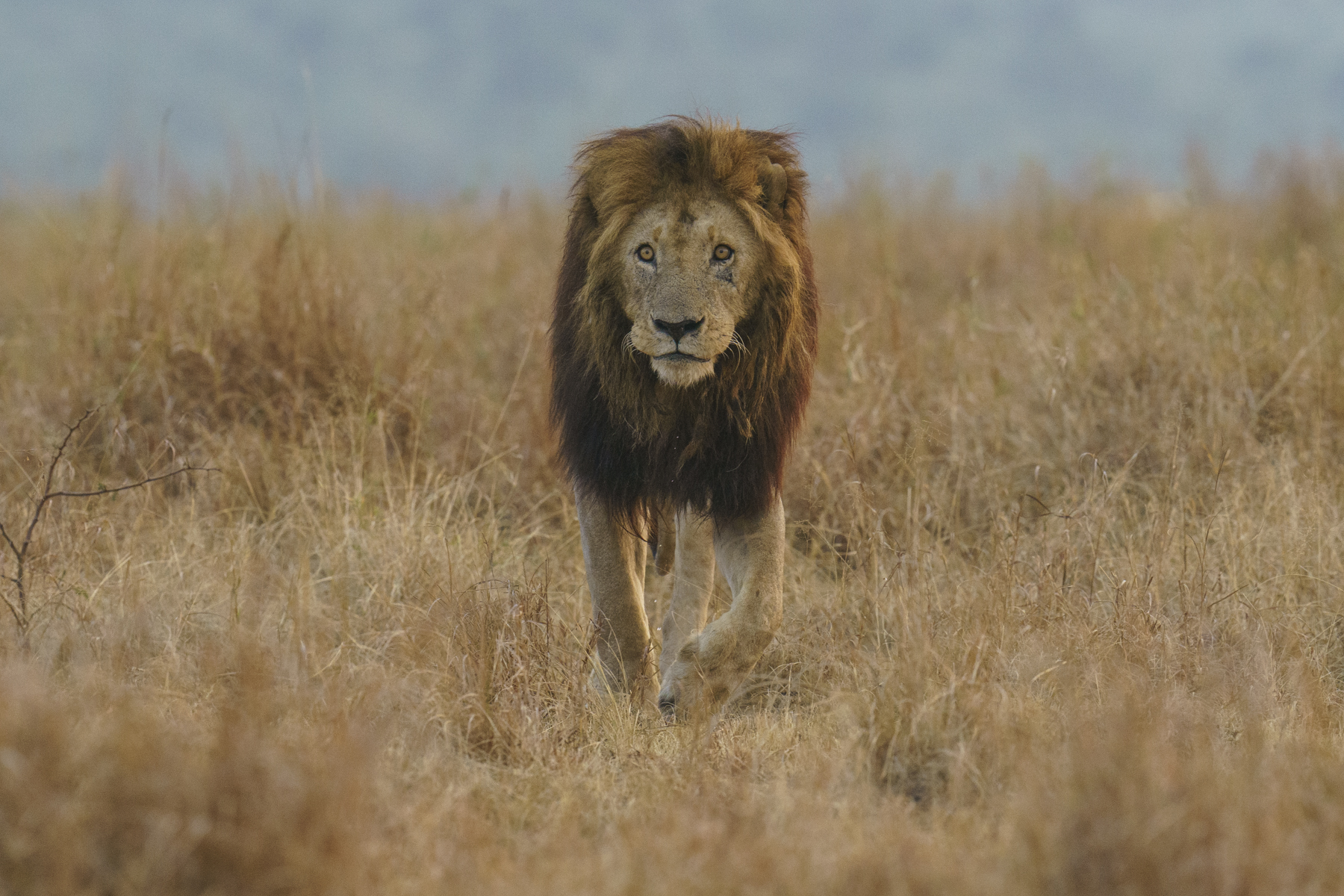
With his dark mane, Morane is one of the most handsome Lions in the Mara (image by Mark Beaman)

Olive Baboon (image by Mark Beaman)
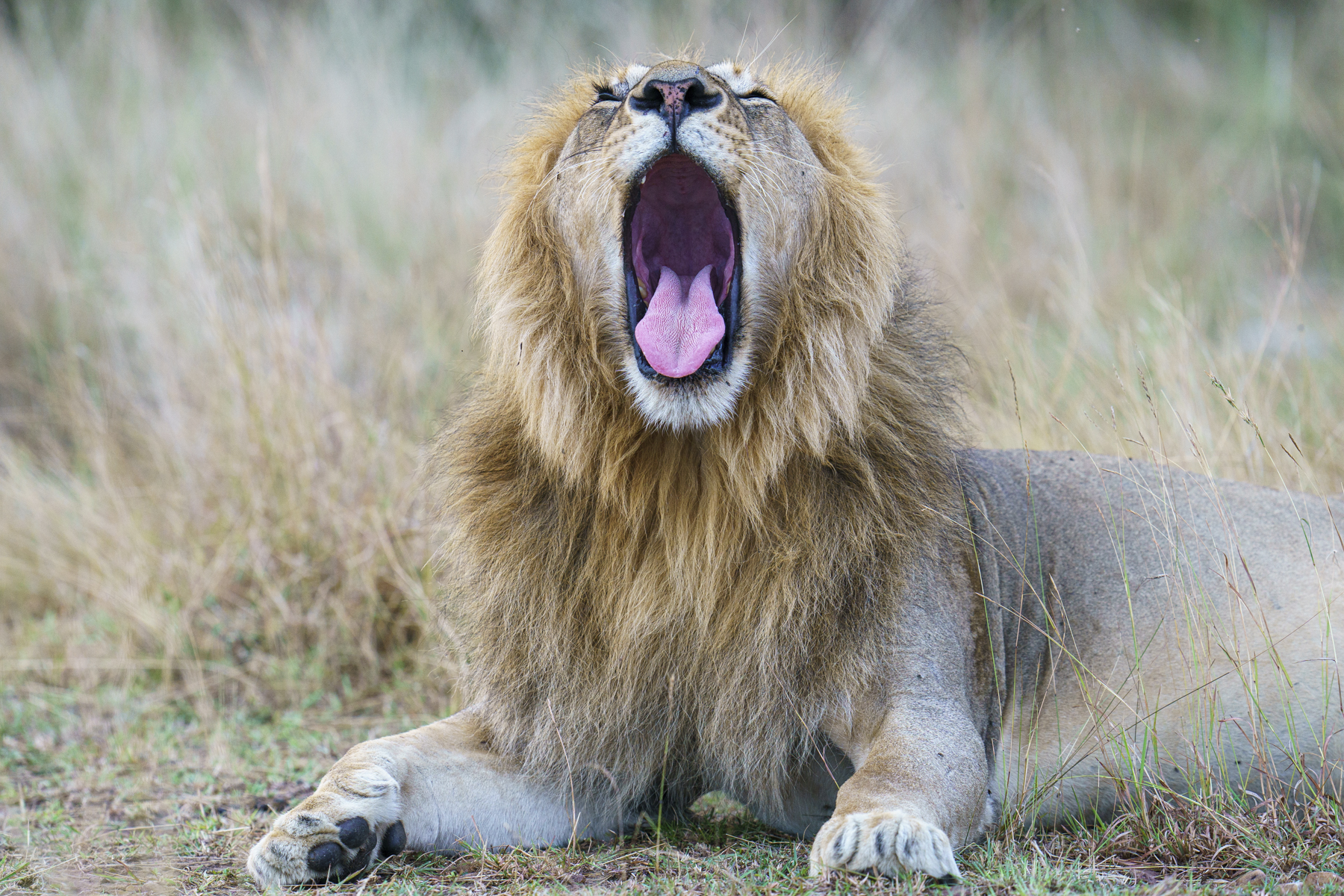
Staying up all night roaring is tiring work (image by Mark Beaman)

Scarface has had a long and hard life, even for a male Lion (image by Mark Beaman)

Mara sunrise (image by Mark Beaman)

Made it! Wildebeest scramble up onto the rocks after a Mara crossing (image by Mark Beaman)

Made it! Wildebeest scramble up onto the rocks after a Mara crossing (image by Mark Beaman)

Lioness profile (image by Mark Beaman)

An African Buffalo chewing the cud (image by Mark Beaman)

Rothschild's Giraffe (image by Mark Beaman)
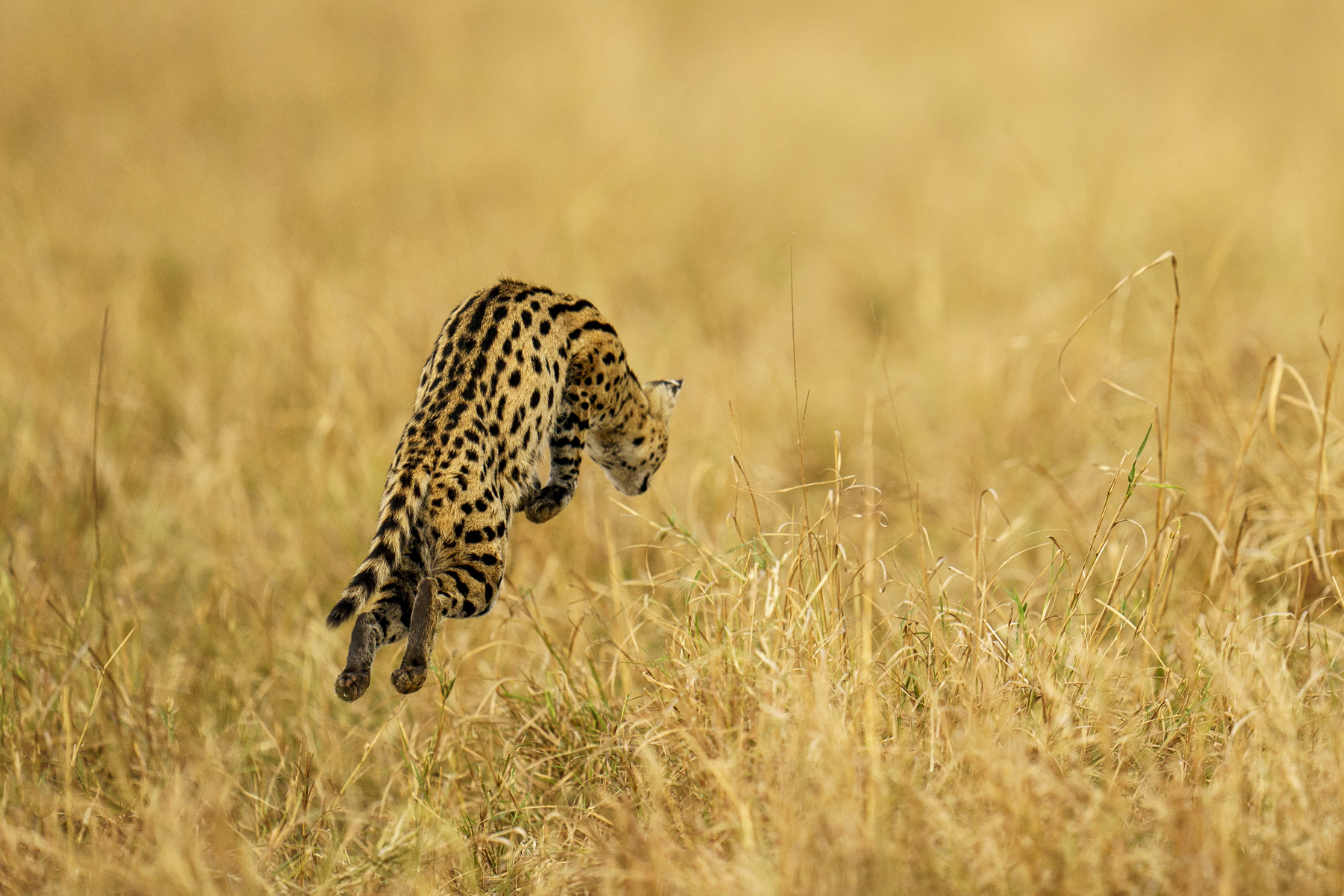
A Serval leaps into the air as it tries to pounce on an African Grass Rat (image by Mark Beaman)

A hunting Serval (image by Mark Beaman)

A cheeky Lilac-breasted Roller rides a male Blue Wildebeest, a great perch for spotting insects (image by Mark Beaman)

African Hawk-Eagle (image by Mark Beaman)

Woolly-necked Stork (image by Mark Beaman)

Don't try chasing me you mangy hyena! (image by Mark Beaman)
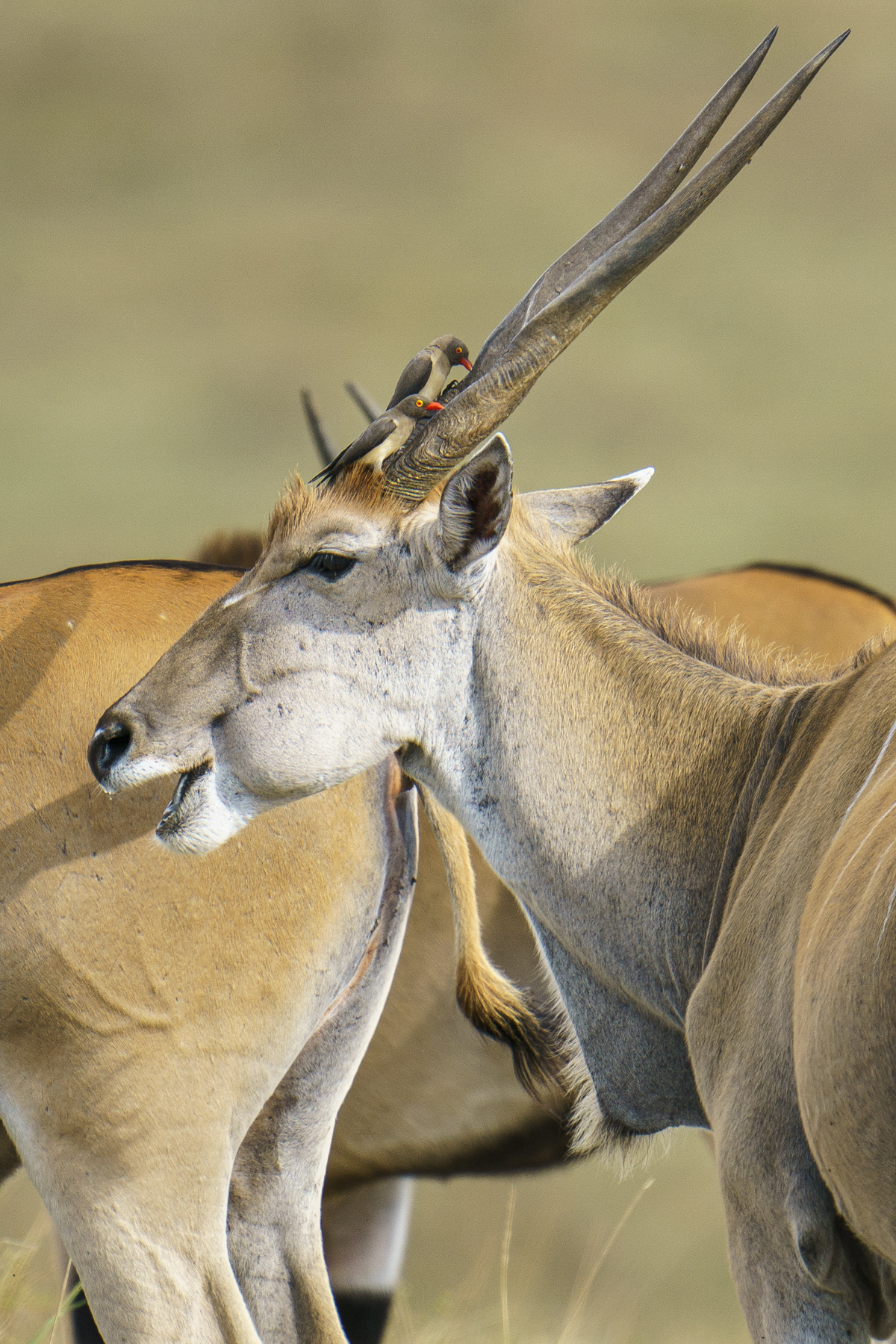
"Are you sure there's something edible up here?" Red-billed Oxpeckers on a Common Eland (image by Mark Beaman)

Bahati takes a moment to pause during her evening hunt (image by Mark Beaman)

Spotted Hyena blur (image by Mark Beaman)

Blue Wildebeest crossing the Mara River (image by Mark Beaman)

Helmeted Guineafowl (image by Mark Beaman)

Rüppell's Vultures fight while a Lappet-faced Vulture looks on (image by Mark Beaman)

Rüppell's Vultures fight while a Lappet-faced Vulture looks on (image by Mark Beaman)

Mara sunrise (image by Mark Beaman)
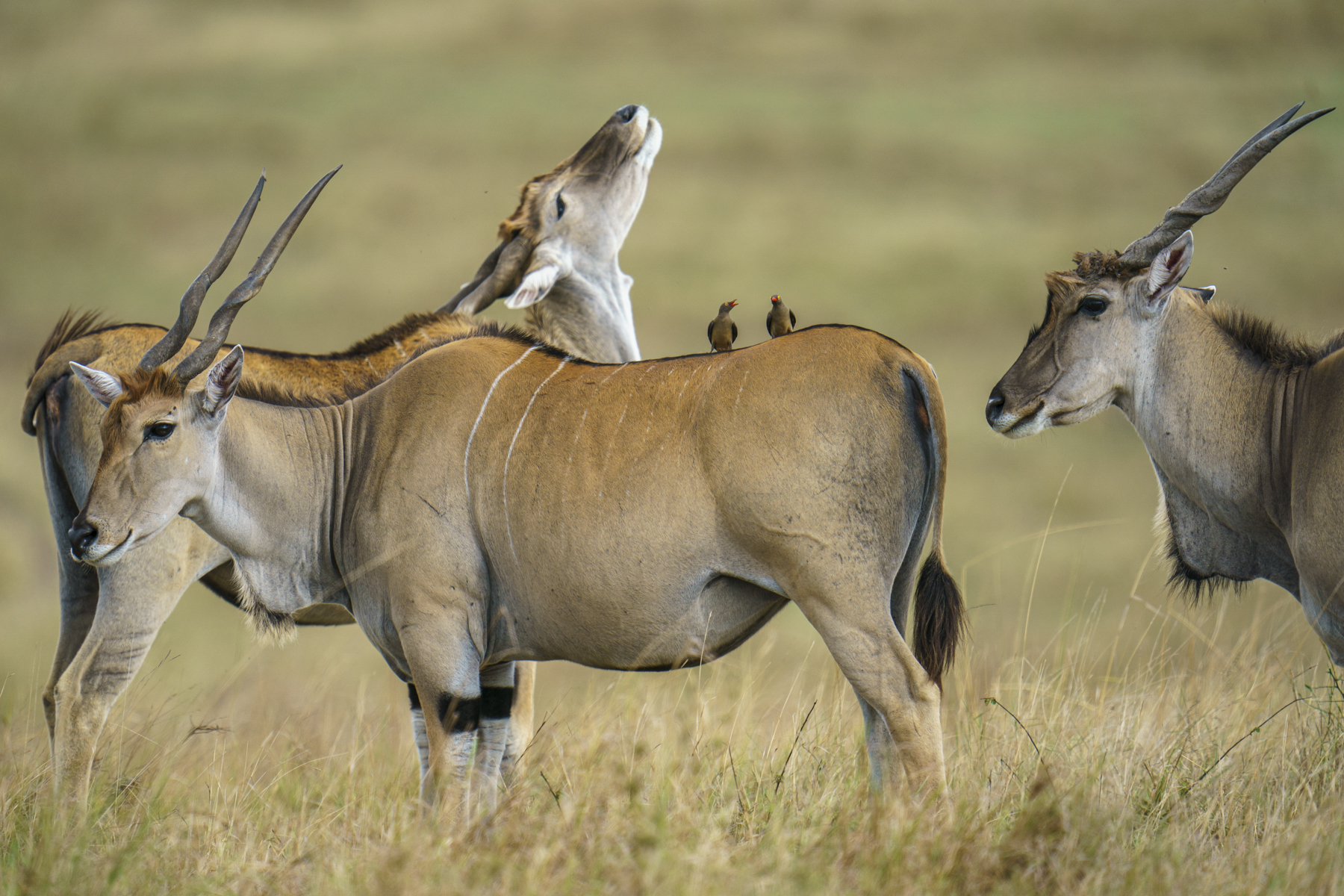
"Did you hear the one about the Dopey Topis?" "No, do tell!" Red-billed Oxpeckers and Common Elands (image by Mark Beaman)

Secretarybirds courting (image by Mark Beaman)

Martial Eagle (image by Mark Beaman)
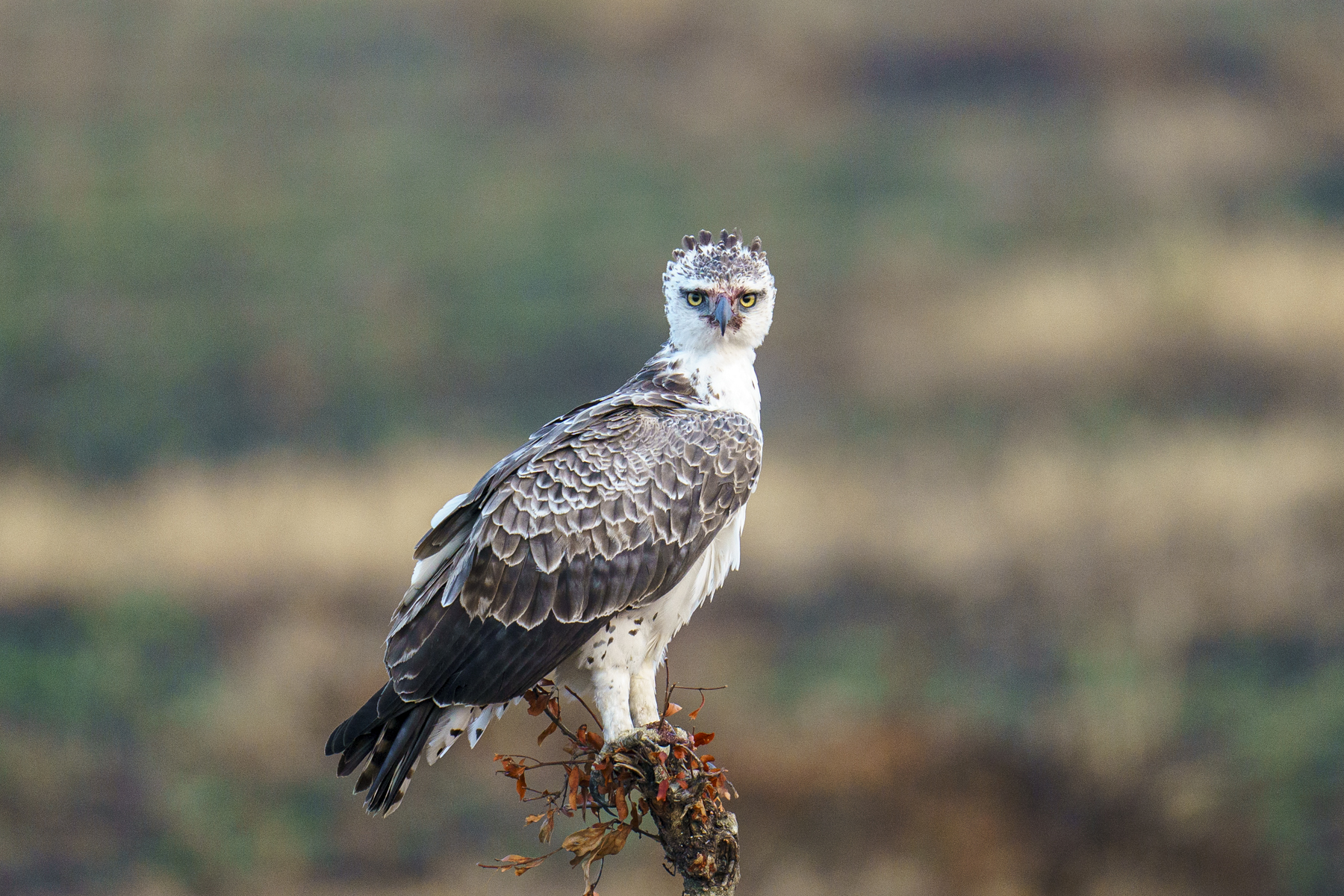
Martial Eagle (image by Mark Beaman)

The one-time 'Leader of the Pack', Scarface (image by Mark Beaman)

No room at the river: Common Zebras drink before a crossing (image by Mark Beaman)

Impalas in the soft early morning light (image by Mark Beaman)

Servals are some of the most agile cats on Earth (image by Mark Beaman)

Wildebeest flow down to the shoreline at Entim on the Mara River (image by Mark Beaman)

Spotted Hyena (image by Mark Beaman)

Jump for your life! A wildebeest takes the plunge at the Mara River (image by Mark Beaman)
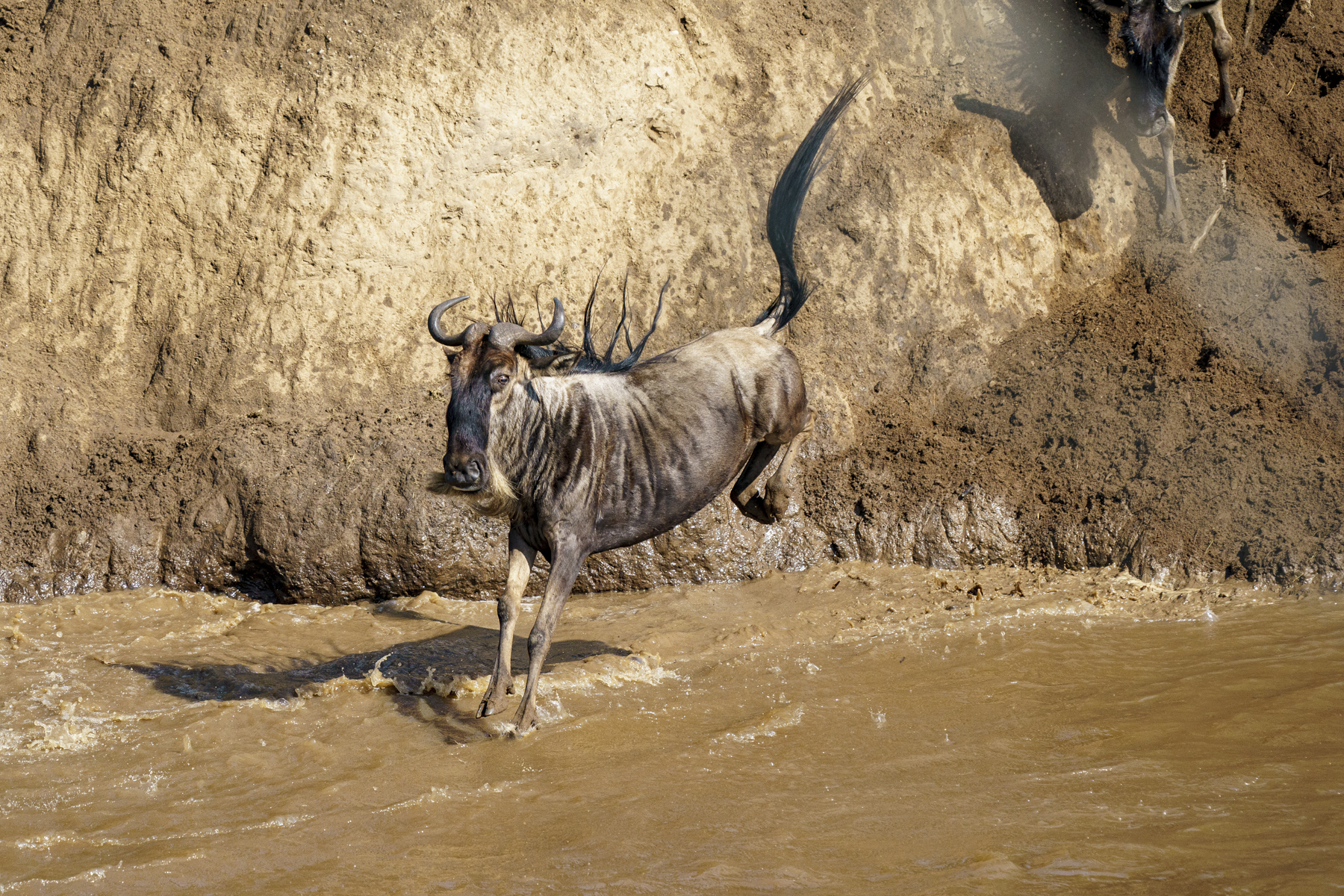
A Blue Wildebeest leaping into the Mara River (image by Mark Beaman)

Here we go... Wildebeest at a crossing (image by Mark Beaman)

The massive, 50,000 plus wildebeest crossing starting at Entim on 20 August 2020 (image by Mark Beaman)
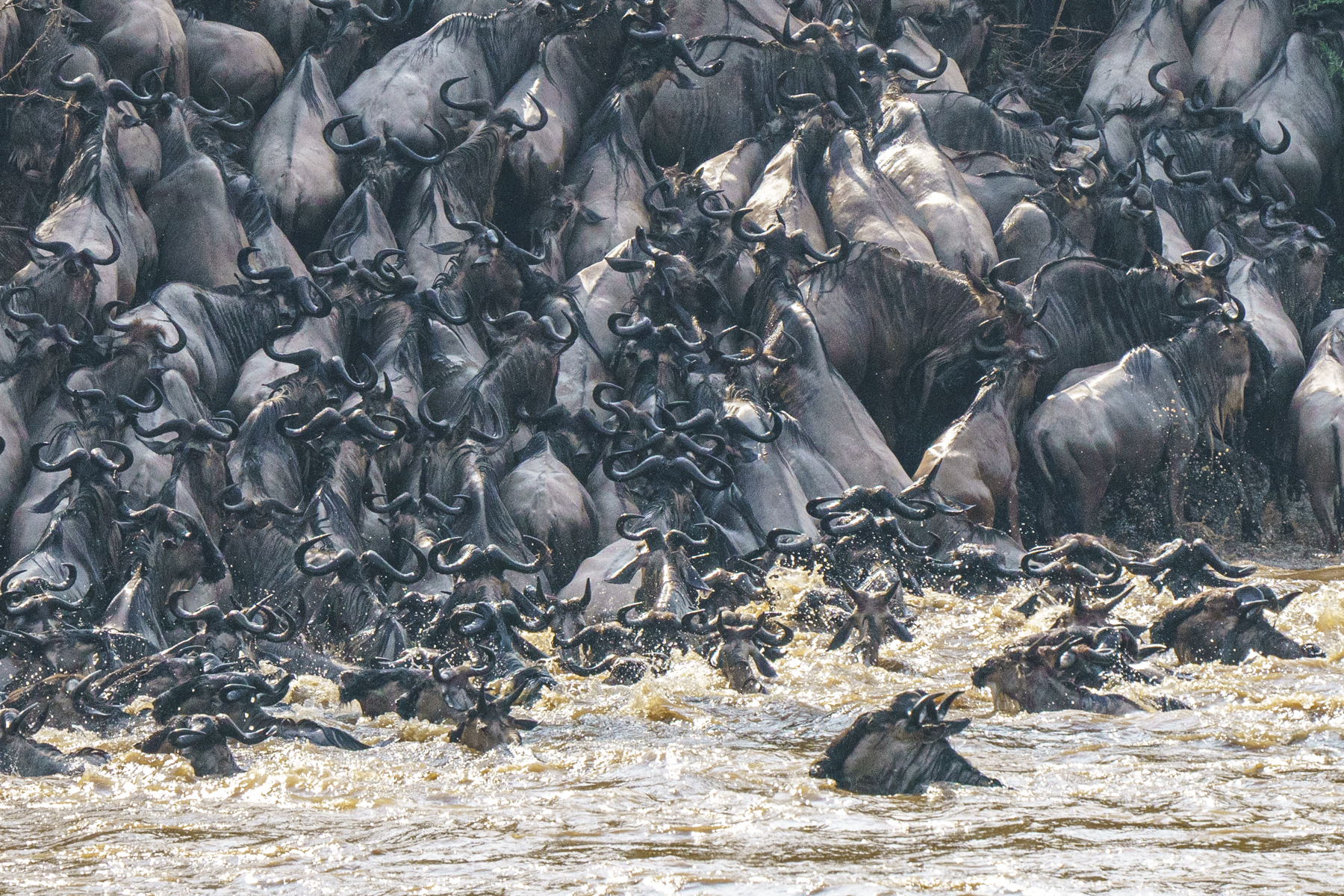
A sea of horns as the Blue Wildebeest try to climb the steep banks of the Mara (image by Mark Beaman)

Even the Hamerkops feast on wildebeest meat during the Mara migration! (image by Mark Beaman)

"Are you sure there's something edible up here?" Red-billed Oxpeckers on a Common Eland (image by Mark Beaman)

Water lilies in the Mara (image by Mark Beaman)
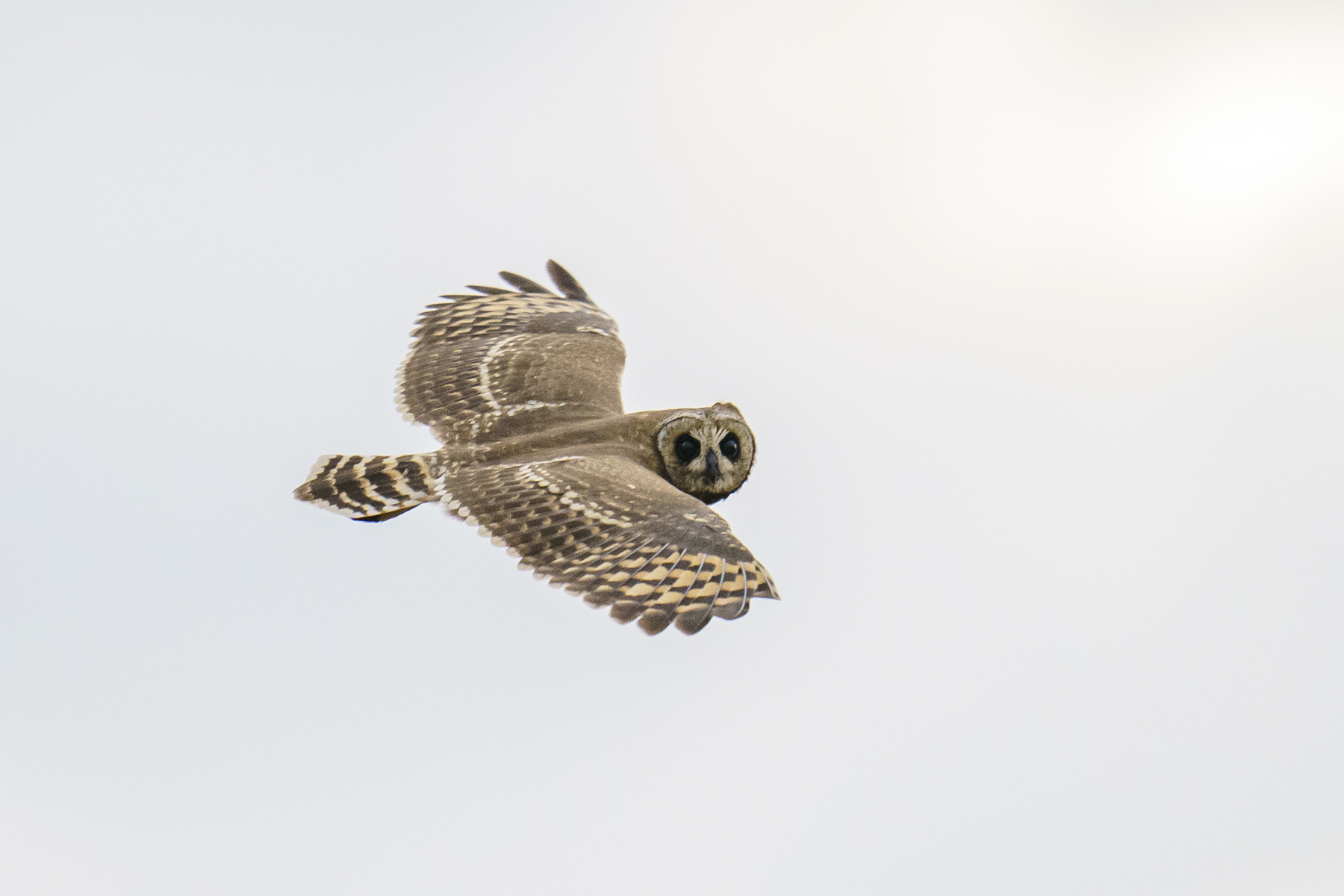
Marsh Owl (image by Mark Beaman)

Blue Wildebeest at sunrise (image by Mark Beaman)

Zebra blur (image by Mark Beaman)

Thomson's Gazelle (image by Mark Beaman)

A female and calf Black Rhinoceros, with attendant Red-billed Oxpeckers, watch as a baby Giraffe ambles past (image by Mark Beaman)

Blue Wildebeest or Brindled Gnu (image by Mark Beaman)
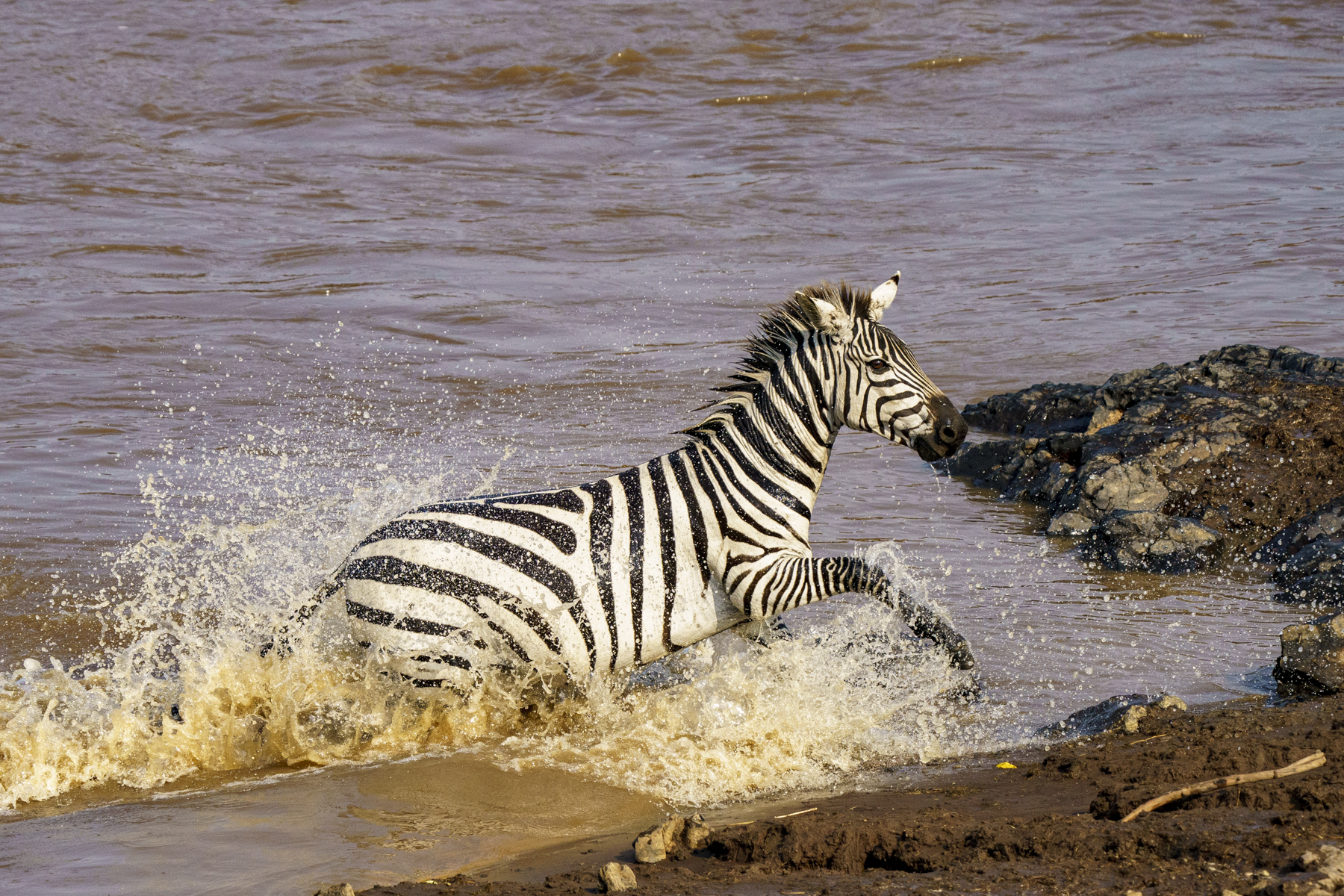
When you cross you had better not stop! (image by Mark Beaman)

Spotted Hyena at sunrise. After the Lion, the greatest predator of the Maasai Mara (image by Mark Beaman)

Morane on the prowl, soon after dawn (image by Mark Beaman)
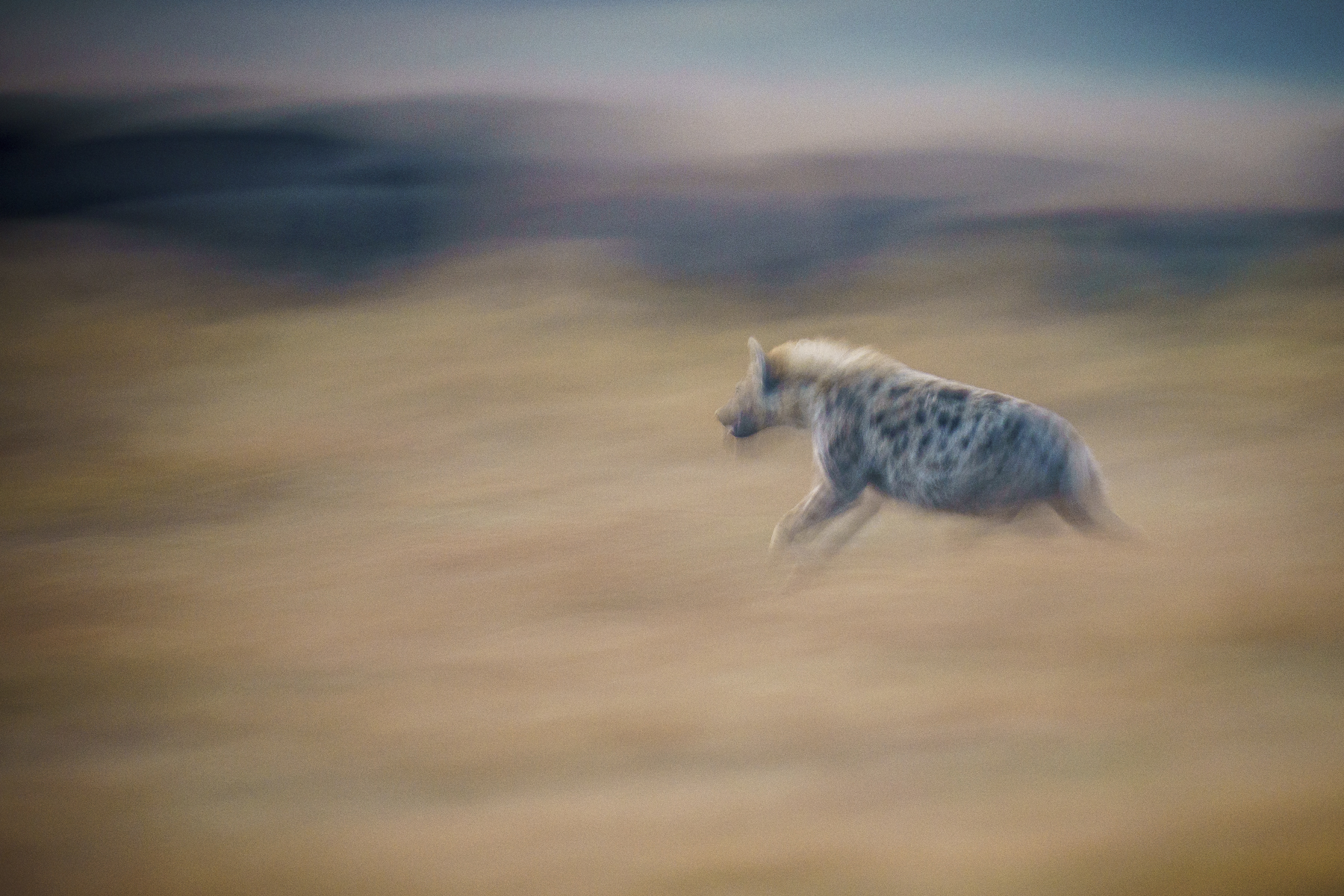
Spotted Hyena blur (image by Mark Beaman)

Temminck's Courser (image by Mark Beaman)

A young Rüppell's Vulture comes in to land at a carcass (image by Mark Beaman)

Bahati is a Leopard that is completely unconcerned by safari vehicles (image by Mark Beaman)
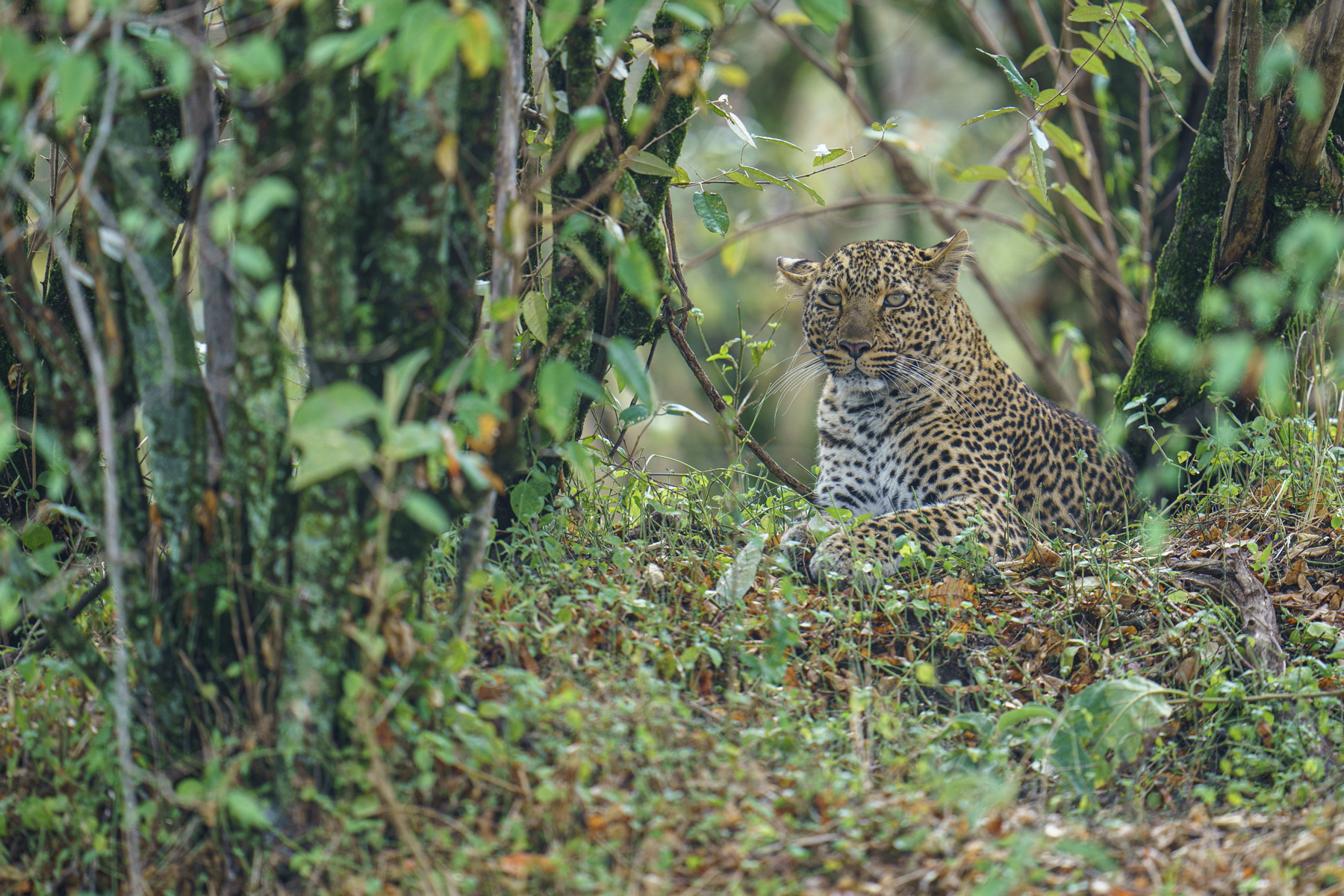
Bella 2 in her leafy nest (image by Mark Beaman)

Impalas rutting (image by Mark Beaman)

Time for a wash, baby (image by Mark Beaman)

Handsome Morane is one of The Three Musketeers (image by Mark Beaman)
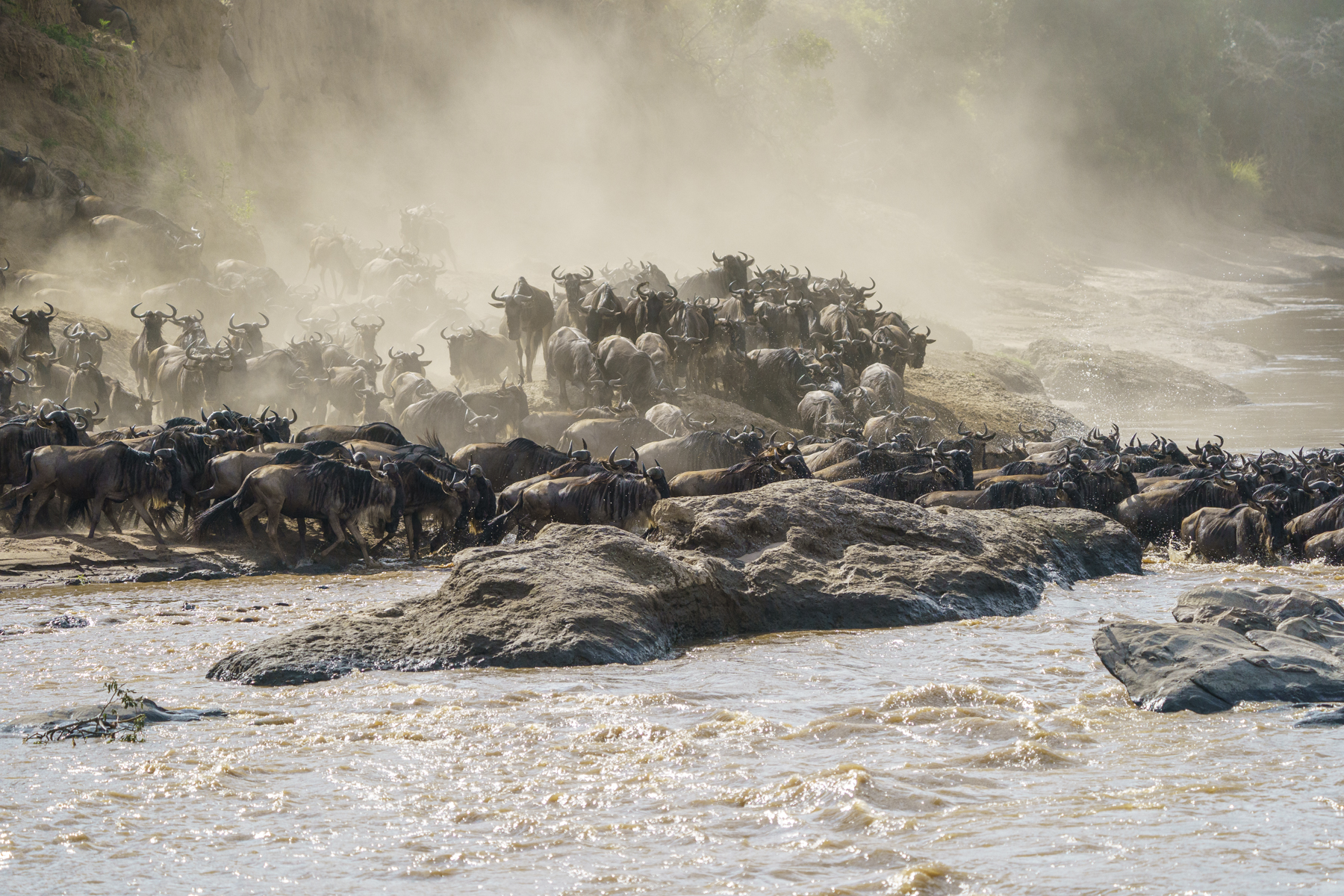
Clouds of dust sometimes envelop a crossing (image by Mark Beaman)
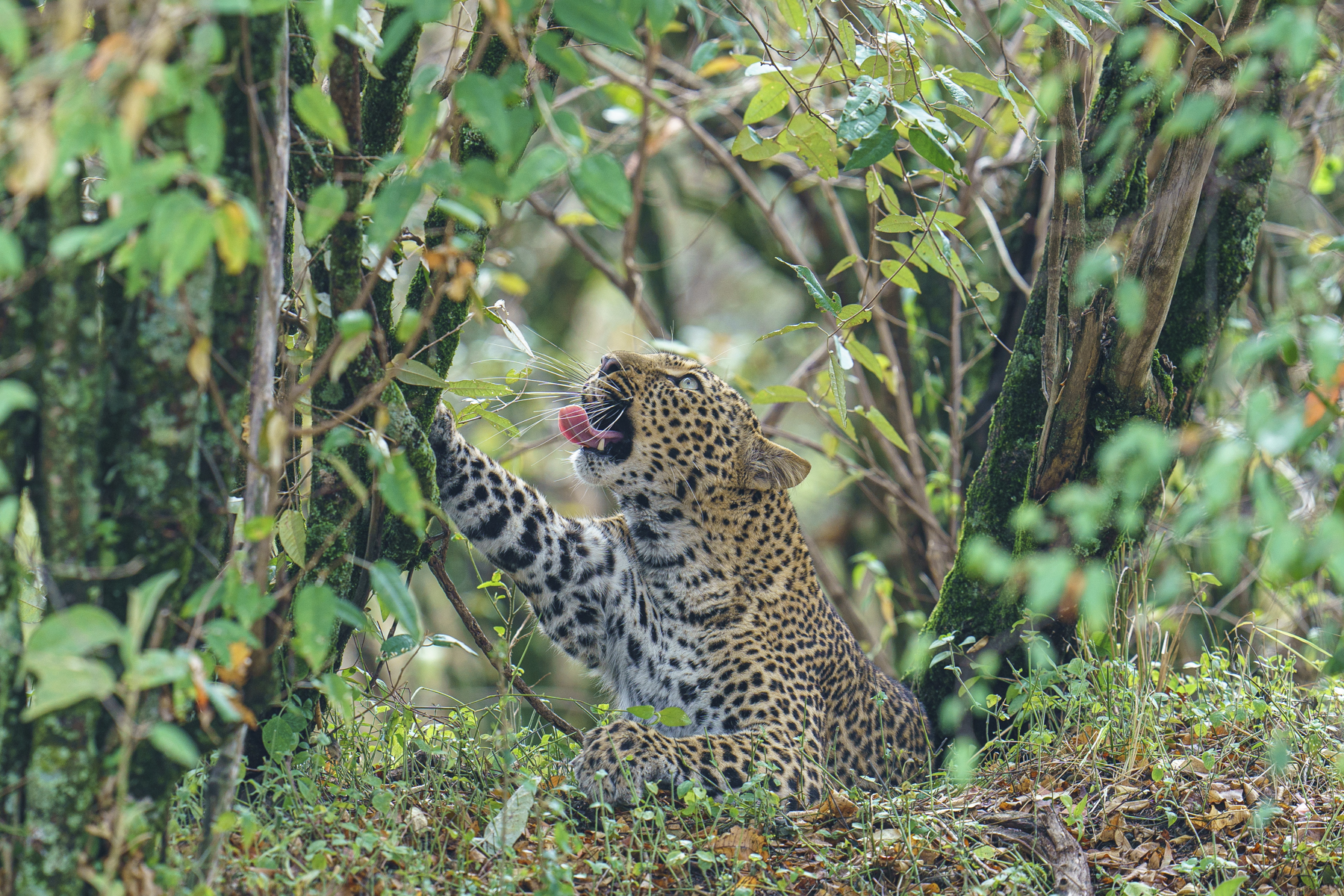
Bella 2 takes a stretch and a yawn (image by Mark Beaman)

Mara landscape on a squally afternoon (image by Mark Beaman)

Black-headed Heron (image by Mark Beaman)
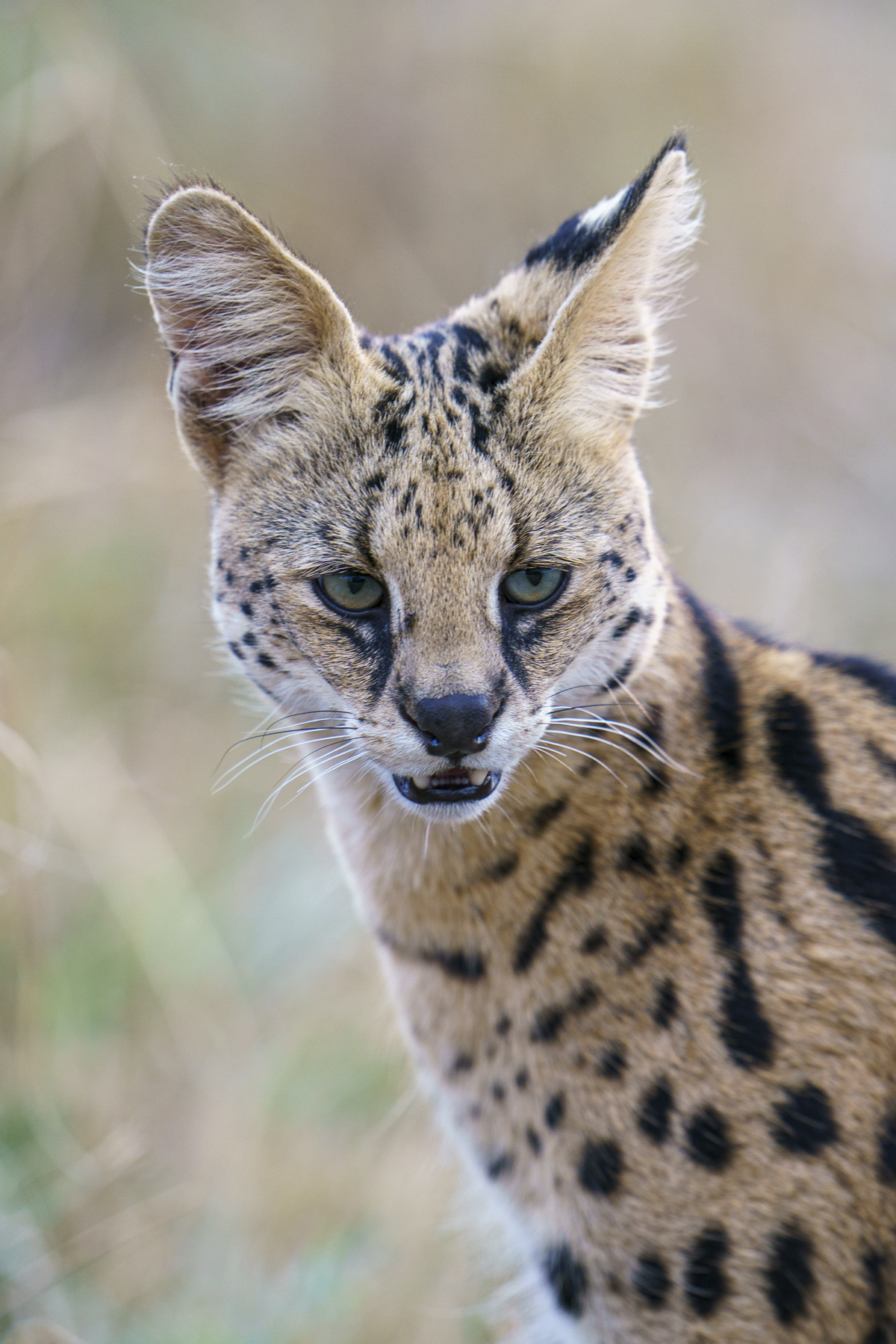
The beautiful Serval (image by Mark Beaman)

Masai Giraffe and very young youngster (image by Mark Beaman)

Zebra blur (image by Mark Beaman)

Common Zebra duo (image by Mark Beaman)

Yellow-billed Oxpecker in a stripey world (image by Mark Beaman)

Bahati picks up the pace. Those Impalas are close... (image by Mark Beaman)

Orkitok, 'the boss' of the Sala's Boys, approaches (image by Mark Beaman)

Red-necked Spurfowl (image by Mark Beaman)

Lappet-faced Vulture, the lord of the carcass (image by Mark Beaman)
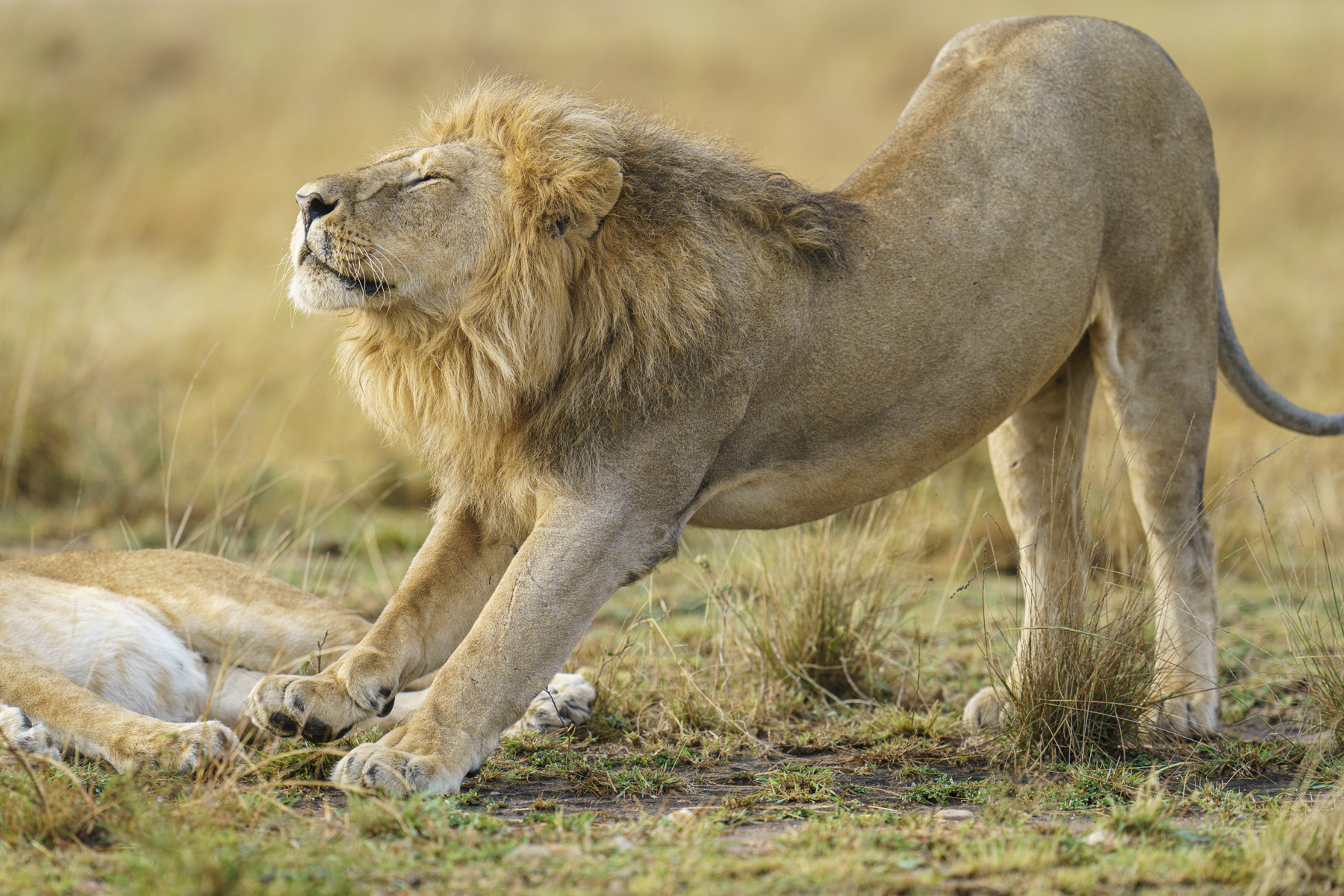
Olepolos, one of the Sala's Boys, stretches after a cat nap (image by Mark Beaman)
Our inaugural Wild Images ‘Migration Special’ in Kenya’s Maasai Mara in August 2020 not only lived up to all expectations but greatly exceeded them! The Blue Wildebeest crossings were unusually numerous this August and included a truly epic Mara River crossing of over 50,000 individuals right at our camp at Entim! We have been sending groups to stay at the well-appreciated Kicheche Bush Camp in the Mara’s Olare-Motorogi Conservancy for some years, which is a truly superb place for photographing big cats and other wildlife, but if you want to see the awesome wildebeest and zebra crossings during the migration from July to October, staying on the Mara River, inside the Maasai Mara National Reserve, is a must, and Entim is the best-positioned camp of all for experiencing the crossings.
After a chance to rest in Nairobi after our flights to Kenya, our Mara adventure began in earnest with a short flight by twin-engined prop plane out of Wilson Airport. At first, the city passed underneath, then the forests of the Ngong Hills, but soon the landscape became drier and more savanna-like as we approached the Maasai Mara. Eventually, the villages gave way to the unbroken wilderness of the Maasai Mara conservancies and then the National Reserve itself. As we approached Olkiombo airstrip, buffalos, elephants, giraffes and even hippos could be seen. What an appetizer!
Soon we were on our way to Entim with our Maasai driver (all the top camps in the Mara employ very experienced local driver-guides who are used to photographers, and ours was a wonderful individual who could not do enough for us). Arriving at the camp, we could immediately appreciate its spectacular location overlooking the Mara River, and indeed we were soon to understand why Entim is a top spot for migration photographers. The ‘tents’ at Entim are really large and almost luxurious rooms, with very nice bathrooms, and we soon settled into our home from home. The food at Entim proved simply outstanding throughout our stay, but digesting our first lunch during a siesta before our afternoon game-drive was to be rudely interrupted. ‘A crossing!’ came the cry, and grabbing our equipment we hurried to the riverbank, arriving just as thousands of wildebeest and a few Common Zebras plunged down the banks and started to cross the Mara River. It was a pandemonium of hooves, legs, faces and horns, complete with a loud cacophony of lowing and grunting voices! As the stream of animals reached the edge of the water, some just waded in while others took great leaps, ending in sheets of spray, as they tried to shorten the crossing time and the length of exposure to the ever-waiting crocodiles! A sea of faces and bobbing horns headed for the far bank, where the vanguard was already scrabbling up the cliffs, anxious to clear the gullies and bushes, where Lions and Leopards often lurk, and regain the open grasslands. In all this bedlam, it was impossible to decide what to concentrate shooting on, so we just shot everything! By the end, we were wondering if we had enough memory cards to last the tour. After 40 minutes or so, the flow stopped and the last stragglers, too afraid to follow, watched as their herd-mates disappeared into the distance, another chapter of their epic journey around the Serengeti-Mara ecosystem completed, this time without any casualties.
Afterwards, we drove out into the grasslands ourselves, finding two superb Servals hunting African Grass Rats (very successfully too) and a courting pair of Secretarybirds on a flat-topped acacia. What a fantastic end to our first half day in the Mara!
Over the coming days, we mostly followed the traditional safari pattern of an early start, an alfresco breakfast and a late morning return to camp, followed by lunch and then a break, or a snooze, before going out again in the late afternoon once the light had improved. However, on a few days, when there were huge numbers of wildebeest close to the river and crossings seemed likely to occur at any time of day, we went out for a full day with both picnic breakfast and lunch.
One thing about a ‘Migration Special’ is that you have to be reconciled to abandoning the Lions or whatever else you happen to be photographing and hurry off along the bumpy tracks to the river as soon as the news of an impending crossing comes in. Hesitate and you may well be watching all the smiles of satisfaction on other photographers’ faces when you arrive just as the last ‘wildies’ are crossing, or get there too late to get a prime parking spot. A migration special is not a conventional photo safari where there is little pressure and you just wander about trying to find this or that subject: the crossings are the absolute number one priority, and deservedly so as they truly are ‘The Greatest Wildlife Spectacle on Earth’. I prefer this description to the commonly quoted ‘The Greatest Show on Earth’ – these brave, determined creatures are not putting on a ‘show’ for us, but participating in the greatest drama of the East African plains as they migrate between their calving grounds in the southeastern Serengeti and the lush grasslands of the Maasai Mara and northern Serengeti. It is an epic journey that all must make, and many die in the process.
Even so, there was plenty of time for other subjects, including all the ‘Big Five’. Tragically, owing to poaching, the Black Rhinoceros is nowadays Critically Endangered, and there are not many left in the Mara, so the survivors take a bit of tracking down. We had just one encounter; a mother with a calf. African Buffalos and African (or Savanna) Elephants are both common enough. The huge-horned male Buffalos chewing the cud were a favourite subject, and even better if an oxpecker or two perched on their heads or horns, while the elephants performed well for us and there was lots of fun with squealing babies and ear-flapping adults.
Predators are common in the Mara, and of course, for most of these, the migration period is the happiest and easiest period of the year. The many Mara Lions harvest the wildebeest every July to October as they move through the area, and even when we could not see the killers themselves, the number of carcasses, often complete with vultures and Marabou Storks, bore witness to what was going on.
We enjoyed some really splendid Lion encounters, including adult males, adult females and cubs. Down in the southern section of the river, the ‘Three Musketeers’ males hold sway with the Lookout Hill pride, including the impressive and aptly-named ‘Scarface’, the grizzled Sikio (complete with forehead wound from being tossed by a buffalo!) and the magnificent Morane, while further north it is the handsome Sala’s Boys that tend to the Rekero pride, consisting of Orkitok (The Boss), Osapuk (Largest of All) and Olepolos (The Middle One). All six gave us wonderful photo opportunities, as did the Lionesses and their cubs.
With all the crossings (we witnessed no fewer than a dozen during our stay), we did not have a great deal of time to track down Leopards, but in spite of that, we had wonderful, close-up encounters with both Bella 2 and her mother Bahati.
Spotted Hyenas and Black-backed Jackals were everywhere, often interacting with the hissing Hooded, White-rumped, Rüppell’s and powerful Lappet-faced Vultures at the kills, eyed by undertaker-like Marabou Storks. We often found hyenas wandering the grasslands and sometimes packs of them. On one morning a pack of eight came across two Common Warthogs and gave chase, but they had picked the wrong victims this time. In a flash, the two ‘warties’ wheeled round and charged, scattering their persecutors!
The Mara Cheetahs also gave us some great moments. Beautiful Nashipae and her two little cubs, still with their ‘Mohican’ white furry stripe from crown to back, were utterly adorable, while we also watched the famous gang of five male Cheetahs (four is unusual, five from 3 litters truly exceptional), known as the Tana Bora (or ‘First Five’), take down a Blue Wildebeest!
As well as all this there were the many Masai Giraffes, including one with a tiny, adorable two-day-old baby that could just about co-ordinate its leg movements. Not to mention all the birds (including the rare sight of a gorgeous Lilac-breasted Roller riding on a male wildebeest), the stormy afternoons on a couple of days (great for landscape photography), the attempts to get the wildebeest into the right place at sunrise or sunset, the following of Elands until their oxpeckers behaved, and so on and so on. The Mara is truly a ‘target-rich’ photographic venue.
And as if all these wonders were not enough, just two days before we had to head home, the greatest crossing of the Mara River for well over a decade occurred, and right at Entim!
We had been amazed by the sheer number of Blue Wildebeest building up on the west side of the Mara River over the previous two days, and we had already enjoyed the spectacle of tens of thousands of wildebeest and zebras crossing over the previous two days, but by the afternoon of the 19th August it was estimated that there were between 200,000–250,000 wildebeest immediately west of the river. From a raised lookout, we could see a veritable ‘sea’ of wildebeest either grazing in huge herds or else marching in long columns towards the river. They had most likely been lured by the unseasonal heavy rainfall recently experienced on our side, which would result in a flush of new growth.
Before dawn on the morning of the 20th August, we waited and hoped. We had already told our guide we would initially stay at the camp, not drive out in the dark, until we could see what was happening. But by dawn all was quiet, with no wildebeest gathering near the river. So we headed out and photographed the sunrise and a few ‘sunrise animals’. Within 30 minutes of leaving a call came through: “Many thousands of wildebeest are galloping towards the Entim Crossing! Come back at once!”.
We rushed back and there were already 10,000 or more gathering on the banks and tens of thousands more approaching! They were like a dense brown flowing sea stretching away for kilometres! We rushed to the crossing viewpoint and as soon as we arrived the wildebeest ‘boiled’ down towards the shoreline, over a front over 500 metres wide, like a veritable torrent of animals. No hesitation, straight into the river, with a thunder of hooves, a din of grunts and lowings, a curtain of spray, and they were coming right at us! Within a minute or two we were surrounded by thousand after thousand of these animals as they climbed up the banks, while yet more arrived on the cliff tops of the western shore. We estimated that at certain times up to 500 wildebeest were crossing every minute! Our driver-guide, who had been driving in the area for a decade, told us that neither he nor any other younger driver had ever witnessed a crossing as gigantic as this one, only older drivers who had been around for 20 years or more!
The press of animals on the western banks was now so great that some animals were being pushed over the earth cliffs and having to leap down, involuntarily, for up to 10-12 metres! It was a miracle that so many survived the leap, but survive most did and joined the throng at the water’s edge. (A few injured themselves and became prey to Lions and hyenas that night.). Dust rose over the throng and instead of the usual fairly narrow stream of animals swimming across there was a mass swim across a front of several hundred metres with three to six huge streams of wildebeest swimming across at any one time.
The crossing went on and one and the noise was deafening. Even the crocodiles were frightened away. Too much danger of trampling for once, so they dared not attack. Apart from the cliff falls, the only casualties were a few unlucky individuals trampled and drowned in the crush. Normally crossings last from ten minutes to perhaps 50-60 minutes maximum, but after three hours this one was still massive and it only finally ended after over three and a half hours! Totally incredible! We shot so many thousands of images between us that it was completely crazy. By the end, it was estimated that somewhere between 50,000 and 60,000 Blue Wildebeest had crossed that morning at Entim, and it could have been more! We could not have hoped for a more extraordinary and awesome finale to our Wild Images Mara Migration Special.


















































































